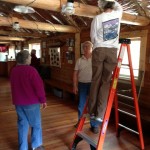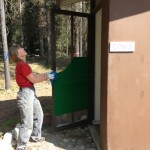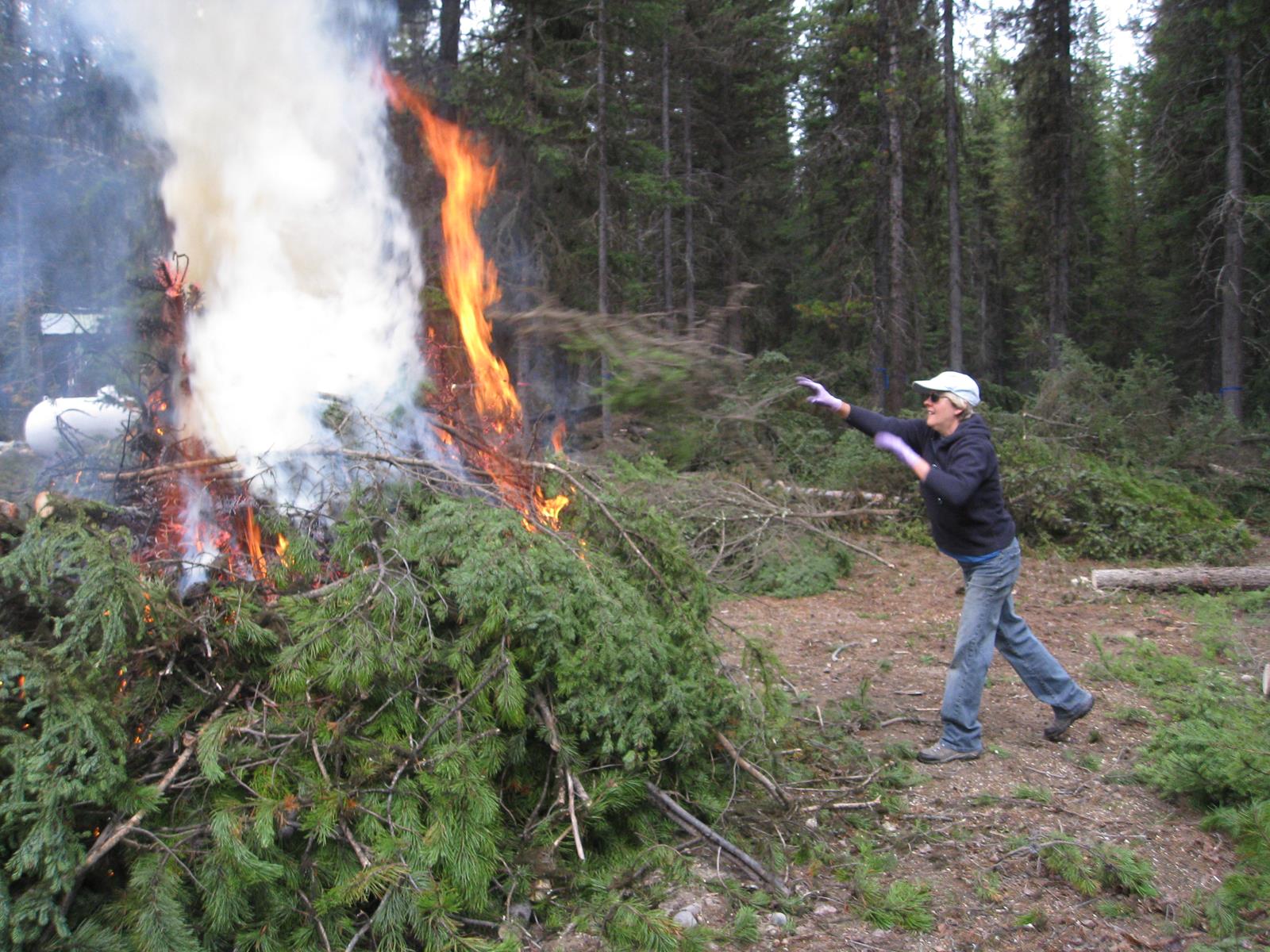During the recently completed Hazardous Fuels Project at Sondreson Community Hall, a very curious item was found. A table knife was found stuck into a spruce tree near the southwest corner of the NFLA property. The knife is an old style of tableware, and has obviously been in the tree for decades due to the tree growth over the blade. It was stuck about six feet above the ground.
Great speculation was revolved around who stuck the knife in the tree, and when did they do it? The knife could easily have been stuck into the tree some 50 years ago. Very curious!
The knife is still in place – please feel free to examine it – and share any information you might have on the mystery surrounding it. But please leave it in place for others to wonder over!


















